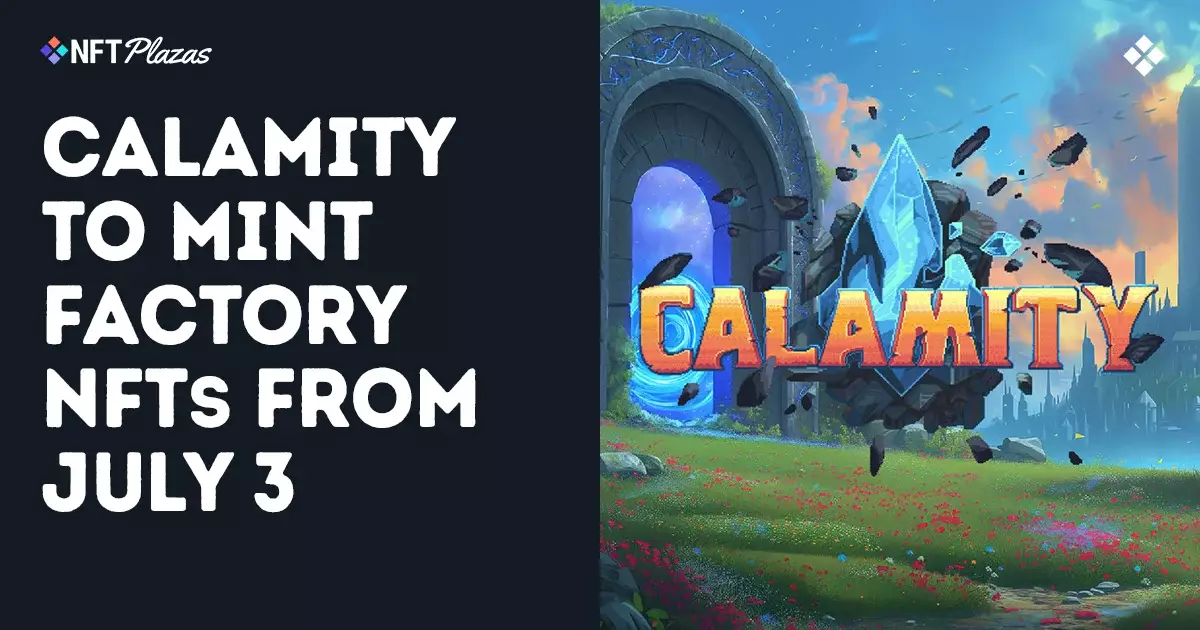The intersection of blockchain technology and gaming has been championed as a revolutionary leap, promising players ownership, new revenue streams, and immersive experiences through NFTs. Calamity’s recent announcement of their Factory NFTs and associated $WYRM token further exemplifies this trend, aiming to blend traditional MMORPG mechanics with blockchain-fueled play-to-earn (P2E) incentives. On the surface, this sounds like a win-win: gamers get new assets and gameplay opportunities, while developers tap into a committed player-investor base. Yet, behind the hype, there lurks a sobering recognition that these projects often elevate speculative finance over meaningful game design, raising serious concerns about the actual value added to the gaming experience.
Tokenizing Play: Genuine Utility or Financial Gambit?
Calamity’s Factory NFTs promise “personal in-game spaces” and “unique mechanics” — ostensibly transforming typical digital collectibles into functional assets within the game world. These NFTs can be staked to earn $WYRM tokens, with tiers offering increasing rewards for holders who merge multiple NFTs. While the concept of player-owned land and staking mechanisms might appear to empower users, it dangerously resembles a financial layer obfuscating the core gameplay. The fact that initial Factory NFTs, priced at $40, are essentially entry tickets to a speculative staking system suggests that players are being coaxed into investment behaviors typical of financial markets, not leisure. For center-right liberals who value market freedom but also insist on responsible innovation, this blending of gaming and token economics demands a discerning eye on both utility and risk.
The Illusion of Ownership in a Fragmented Ecosystem
One of the most enticing narratives around NFT gaming is the promise of “true digital ownership,” allowing players control over in-game assets unmediated by centralized entities. Yet, in practice, such ownership is contingent upon the survival of the game’s ecosystem and blockchain infrastructure. Calamity’s NFTs are hosted on Ronin and Ethereum, requiring users to engage with complex blockchain networks that remain largely inaccessible or bewildering to mainstream gamers. Far from liberating players, this layered structure may compound confusion and alienate those unwilling to delve into DeFi complexities. Ownership, in this context, risks being a mirage—valuable only if the ecosystem thrives and the NFTs maintain liquidity, which history shows is far from guaranteed.
Play-to-Earn: A Double-Edged Sword
The allure of earning real-world value through gaming is compelling, yet P2E models often distort player motivation and game balance. Calamity’s upcoming Season 1, with “performance-based” P2E rewards, typifies this tension. When players are incentivized to optimize earnings over enjoyment, gameplay risks devolving into grinding or exploitative behaviors, detracting from sustained engagement. Moreover, the promise of scalable returns through higher-tier NFTs mirrors pyramid-like reward mechanics, potentially persuading newcomers to invest heavily based on speculative future value rather than genuine game interest. This feeds into the broader critique that many NFT games tread dangerously close to financial products masquerading as entertainment.
Game Quality Takes a Back Seat to Tokenomics
While Calamity draws inspiration from reputable franchises like Diablo and Lineage II, its focus on token utility seems to overshadow core design priorities. The excitement around features like “unique mechanics” tied to NFT ownership may inadvertently highlight how fundamental gameplay elements are being subordinated to blockchain utility. True innovation in gaming demands prioritizing player experience, storytelling, and competitive balance—areas that often suffer when token integration is retrofitted into existing genres for speculative appeal. From a center-right perspective that appreciates entrepreneurship but also values meritocratic outcomes, this raises red flags about the sustainability and artistic integrity of NFT-based games.
The Risk of Exclusion by Complexity and Cost
With Factory NFTs priced at $40 for the Early Bird stage and transactions requiring payment via USDT on Ronin or Ethereum, Calamity’s entry costs could deter casual gamers and those adverse to cryptocurrency exposure. The merging system to create higher-tier NFTs further raises the stakes, possibly pressuring players to invest more to stay competitive. This creates a de facto pay-to-win scenario wrapped in the language of ownership and utility, alienating players without disposable income or technical savvy. A center-right lens that respects free-market participation must also acknowledge that when technological or financial complexities serve as barriers to entry, market dynamics risk becoming exclusionary rather than empowering.
Blockchain Gaming’s Future Hinges on Balance, Not Just Buzz
Calamity’s Factory NFTs and $WYRM token underscore both the ambition and pitfalls of current NFT gaming ventures. The potential to redefine player engagement through ownership and economic incentives is real but must be tempered with sober assessment of how such models impact game quality, player inclusivity, and long-term viability. As blockchain and gaming increasingly intertwine, stakeholders—developers, players, and policymakers alike—must demand clarity, fairness, and genuine in-game utility rather than succumb to hype cycles. For those who cherish innovation balanced by practical outcomes, the true challenge lies in separating meaningful progress from speculative excess in this unfolding digital frontier.

